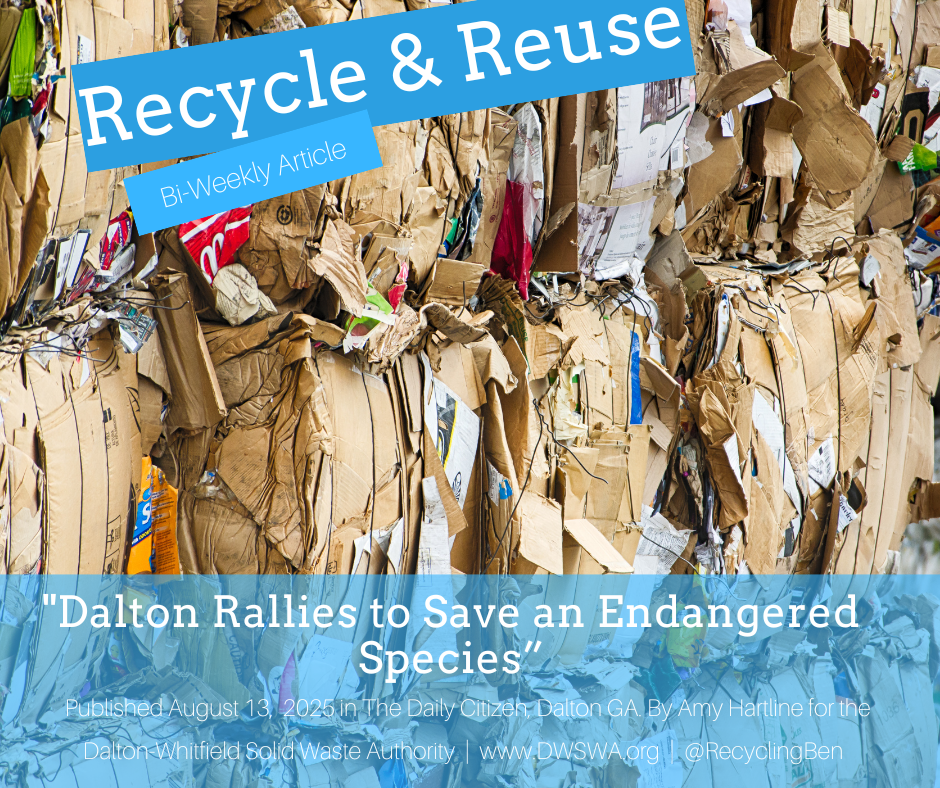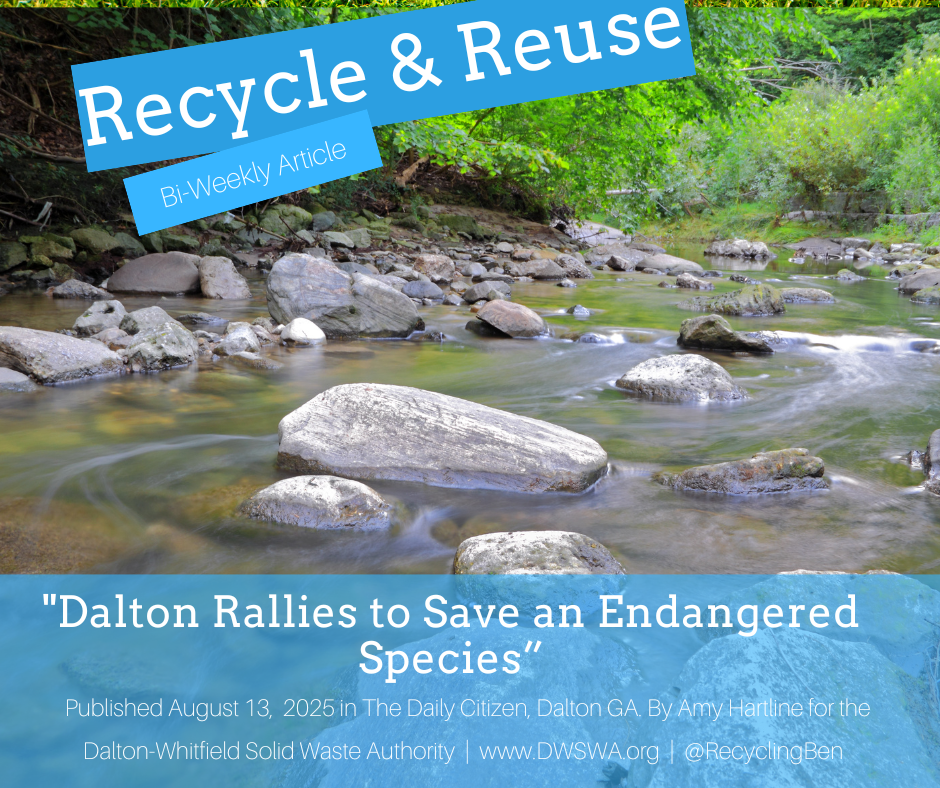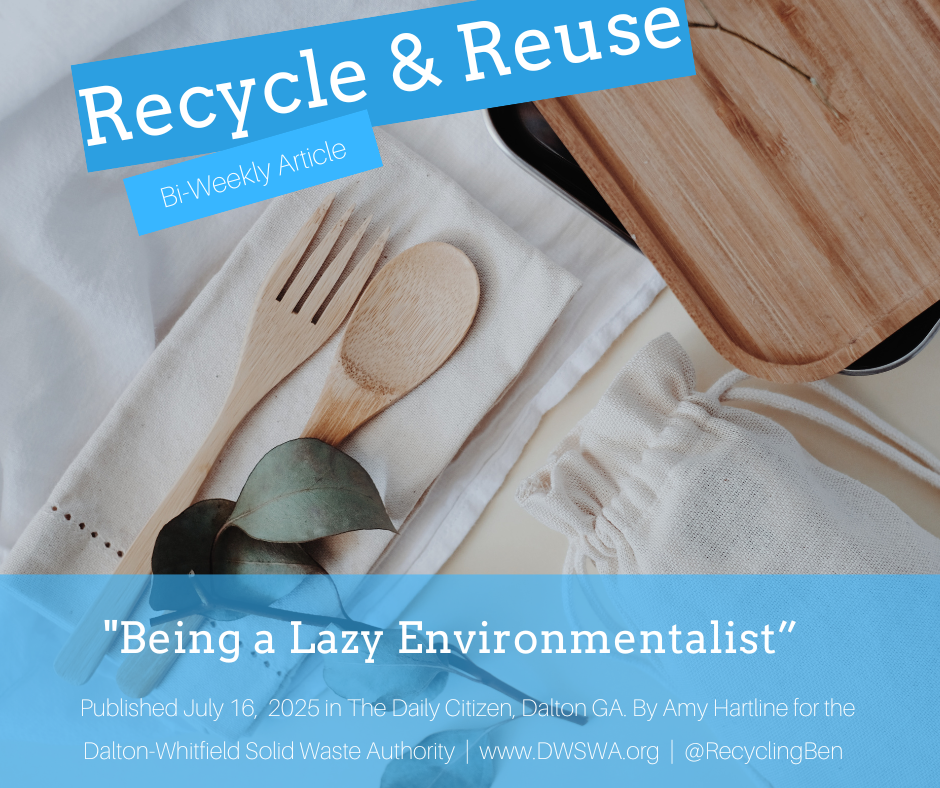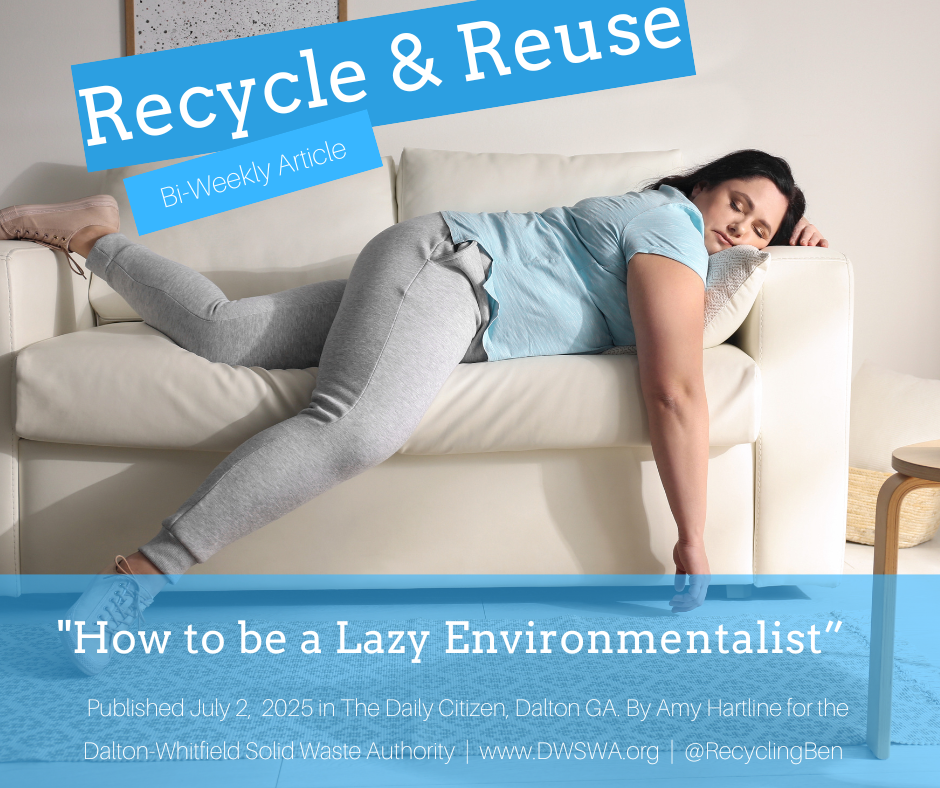Is Recycled Paper Better Than New Paper?
/As we use technology more, we use paper less but it still makes up one of the largest percentages of our waste. According to the Environmental Protection Agency, we paper and paperboard products made up 23.1% of our waste stream in 2018. If you walk though a grocery store, this makes sense. All of our cereals, crackers, and more come packed in paperboard boxes, we still use notebook and printer paper for information, and products like toilet paper, napkins, and paper towels help keep our households clean. We rely on paper products more than any other material that we ever dispose of including food and plastics.
The great news is that paper has one of the highest recycling rates with 68.2% getting recycled in 2018. Paper is one of the easiest items to get recycled due to how transportable it is and the vast amount of items it can be turned in to. Your paper recycled in Whitfield County and Dalton may get turned in to Subway napkins, book covers, or candy boxes depending on what item is needed most the day it is processed.
While paper recycling may be less confusing than other types such as plastic, there can be a few tricky items that you may be unsure about. The easiest way to see if paper can be put in the recycling bin is by doing the tear test. This is when you see if you can easily tear the paper item you think may be recyclable. If it doesn’t tear easy, it can’t be recycled and should go in the trash.
With this test, you’ll find that commonly confused items like paper cups and laminated paper are clearly not recyclable. The lamination encapsulates the paper in plastic making it too difficult to remove and recycle. The paper cups you get at the coffee shop have a polyethylene coating that helps your cup stand up to the high coffee temperature, but makes it incredibly expensive to recycle.
Small attachments to your paper such as the plastic sleeves or staples are okay to put in the recycling bin, however. It is a common misconception that those items have to be thrown away as well but because they are so small and how the paper is processed for recycling you can recycle it without a worry.
Recycled paper goes through a unique process to get turned into new items. First, it is sorted at the Dalton Recycling Center and then screened again when it is transported to the manufacturing facility. Then, all of the paper is pulped together in a large tub and it looks like a lot of oatmeal though it doesn’t smell as nice. After, it is mixed together and pulped it is dried and rolled into large rolls of paper. Once these rolls are created, they can use the recycled paper in the same manner they use paper made from raw material to make all of the new products.
So, why recycle if it goes through the same process as new paper? While the process may look similar and give the same products at the end, the beginning of the paper’s journey makes a large difference for our planet. Recycling just one ton of paper saves seventeen trees which means that less trees get cut down. Even if you replant a tree when you cut it down, the older trees are larger and do a better job of decreasing carbon dioxide and increasing oxygen in our air and serve better as animal habitats. Recycling your paper decreases water pollution by 35% and air pollution by 74% because the paper mills do not have to use as many of the harsh chemicals, such as methanol or formaldehyde, as they do for new paper.
Even if you are not an avid recycler, making sure your paper ends up in the right bin helps you live in a cleaner environment and is one of easiest changes you can make starting today. That may look like starting to use a recycling bin at work or saving up your paper at home to take to the convenience center. Give your paper a second life by getting it recycled.
Amy Hartline is the recycling and education program coordinator for the Dalton-Whitfield Solid Waste Authority. Have a recycling question? Contact her at (706) 278-5001 or ahartline@dwswa.org.
With Whitfield County and the City of Dalton recycling, your paper can go on to become many great new things such as any of these products.
































